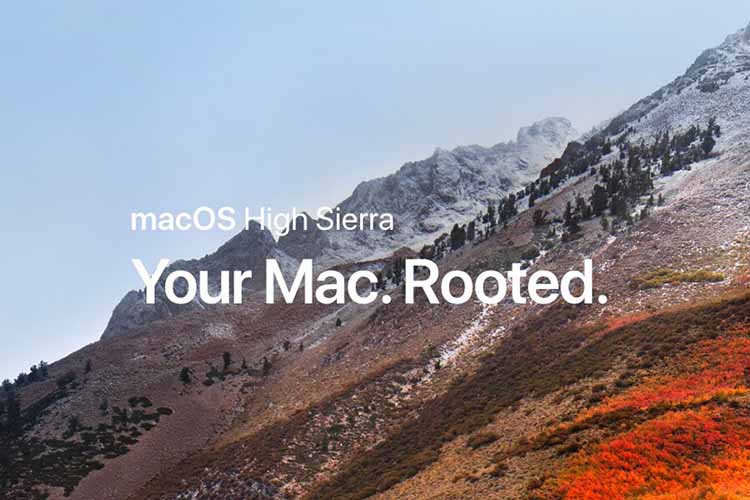STEP 1: Download macOS High Sierra The full operating system is a free download for anyone who has purchased Mac OS X Snow Leopard, Lion, or Mountain Lion or has a Mac preloaded with OS X Mavericks, Yosemite, El Capitan, or macOS Sierra. Apple has issued a security update for its latest version of the High Sierra operating system after a flaw in its security that could allow anyone, anywhere to hack you just by typing a single word. Hacking a Brand New Mac Remotely, Right Out of the Box. And the company released a fix in macOS High Sierra 10.13.6 last month, but devices that have already been manufactured and ship with an. UPDATED with response from Apple. Apple's new macOS 10.13 High Sierra is only a day old, and it's already been hacked. A rogue application or other service running on a Mac can easily break into. Sierra; Download the operating system officially is always ideal, and this will allow you to download the absolute latest version of High Sierra. You’ll need to have your Apple ID ready, and once you do, navigate to the Mac App Store.

16 June 2018, 11:37
The forthcoming macOS Mojave comes with a “dark mode” interface option. This switches the interface from being broadly white and grey, as per computing over the last 30 years, to being various shares of black and grey. It looks great—but did you know a preview of this is built into macOS High Sierra?
I’m NOT talking about the simple “Use Dark Menu and Dock” option within the “General” section of System Preferences (although if you follow the steps below then you’ll want to activate this too).
No, this is a system-wide config affecting most windows and it uses a hidden system key called “NSWindowDarkChocolate”. DarkChocolate is likely to be Apple’s internal codename for the dark mode feature.
Within High Sierra DarkChocolate is a prototype implementation and, to be blunt, it doesn’t work very well. Some interface items look wrong or are unreadable. Some apps like Calendar or third-party apps such as Microsoft Word just entirely ignore the setting and revert to their usual white mode.
But it’s fun to play around with.
Warning! Follow the steps below at your own risk! I will not be held responsible for damage arising from this. If you’re unsure, go no further!
Switching it on is pretty simple:
- Open a Terminal window. You’ll find Terminal in the Utilities folder of the Applications list in Finder.
- Paste in the following, which might appear as more than one line on your screen but is actually a single-line—just triple-click the text to highlight it, and then Cmd+C to copy it before pasting it into the Terminal window:
- Log out via the Apple menu, and then log back in again.
Don’t forget that you’ll need to also turn on dark menu and dock within System Preference’s “General” section. Oh, and if you want the macOS Mojave “dark” desert wallpapers for the complete picture then—go right ahead!
Switching off dark mode is a matter of repeating the steps above to open Terminal, and this time pasting the following…

… And then rebooting the system (logging out doesn’t seem to turn off the feature—which again seems to indicate a buggy implementation).
(This hack appears to have been uncovered by Steve Troughton-Smith, with thanks.)
Leave a comment...
Works on Sierra, too! Thanks!
— chatski · Dec 31, 02:13 AM · #
◀︎ How to make your iPhone or iPad use Messages in iCloud
How to fix a clicky or noisy trackpad on a MacBook Pro ▶︎
Bootable USB Installers for OS X Mavericks, Yosemite, El Capitan, and Sierra
First, review this introductory article: Create a bootable installer for macOS. Second, see this How To outline for creating a bootable El Capitan installer. Simply replace the Terminal command with the one from the preceding article by copying it into the Terminal window. You will need an 8GB or larger USB flash drive that has been partitioned and formatted for use with OS X.
Drive Partition and Format
- Open Disk Utility in the Utilities' folder.
- After Disk Utility loads select the drive (out-dented entry with the mfg.'s ID and size) from the side list.
- Click on the Erase tab in the Disk Utility toolbar. Name the drive, 'MyVolume'. <---- IMPORTANT!
- In the drop down panel set the partition scheme to GUID. Set the Format type to Mac OS Extended (Journaled.)
- Click on the Apply button and wait for the Done button to activate. When it does click on it.
- Quit Disk Utility.
Create Installer
Open the Terminal in the Utilities' folder. Choose the appropriate command line (in red) depending upon what OS X installer you want. Paste that entire command line from below at the Terminal's prompt:
Command for macOS High Sierra:
sudo /Applications/Install macOS High Sierra.app/Contents/Resources/createinstallmedia --volume /Volumes/MyVolume --applicationpath /Applications/Install macOS High Sierra.app
Command for macOS Sierra:
sudo /Applications/Install macOS Sierra.app/Contents/Resources/createinstallmedia --volume /Volumes/MyVolume --applicationpath /Applications/Install macOS Sierra.app
Mac Os High Sierra Support
Command for El Capitan:
sudo /Applications/Install OS X El Capitan.app/Contents/Resources/createinstallmedia --volume /Volumes/MyVolume --applicationpath /Applications/Install OS X El Capitan.app

Command for Yosemite:
sudo /Applications/Install OS X Yosemite.app/Contents/Resources/createinstallmedia --volume /Volumes/MyVolume --applicationpath /Applications/Install OS X Yosemite.app
Command for Mavericks:
sudo /Applications/Install OS X Mavericks.app/Contents/Resources/createinstallmedia --volume /Volumes/MyVolume --applicationpath /Applications/Install OS X Mavericks.app
Mac High Sierra Download
Press RETURN. You will be asked for your admin password. It will not echo to the Terminal window. Then press RETURN again. Wait for the return of the Terminal prompt signifying the process has completed. It takes quite some time to finish. Be patient.
Mac High Sierra Wallpaper
Sep 13, 2018 1:16 PM
